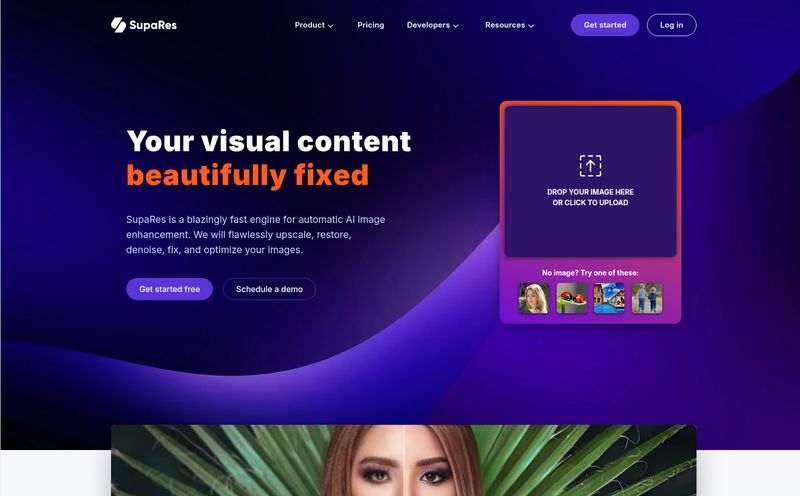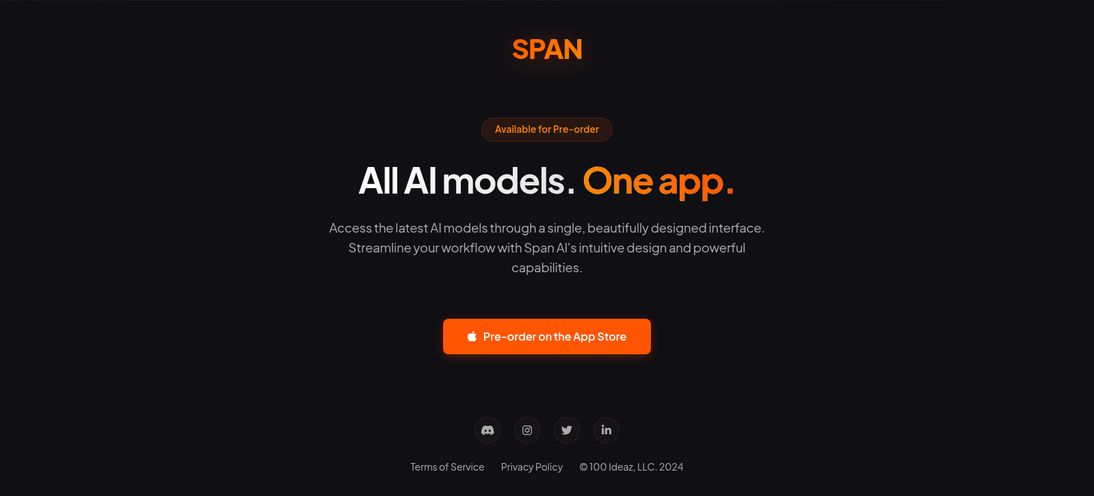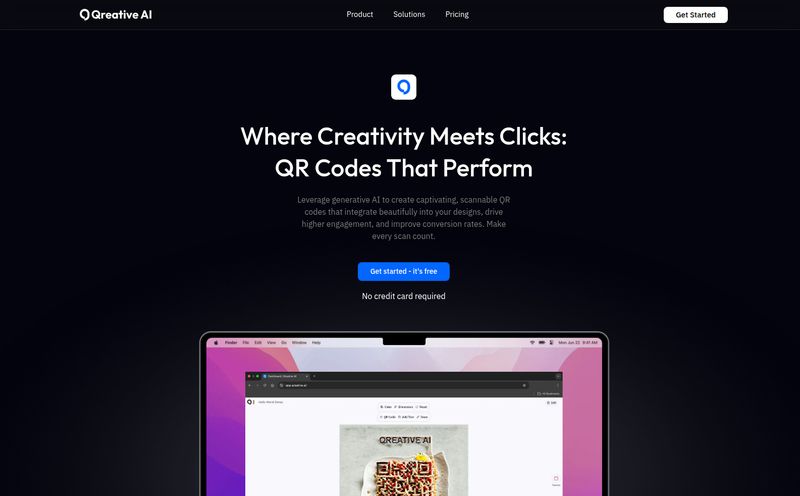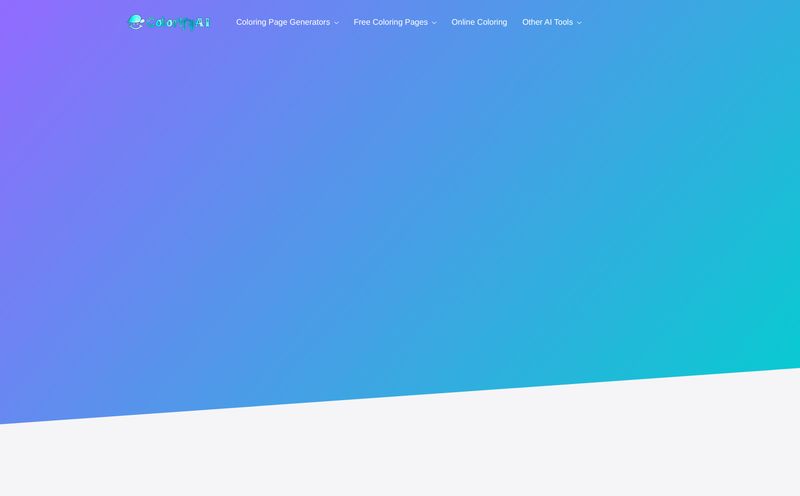If you've ever worked on a 3D project, you know the pain. The absolute, soul-crushing grind of creating textures. I've been there. I’ve spent more late nights than I can count in Photoshop, nudging pixels, fighting with the offset filter, trying to create a tileable texture that doesn't scream, “Hey, look at me, I’m a repeating pattern!” It’s a thankless job that can suck the creative life right out of a project.
For years, we've had procedural tools, but they often feel clunky, generic, or require a Ph.D. in node-based editors. Then came the first wave of AI image generators. Fun for concept art, sure. But for usable, consistent, game-ready assets? Not so much. It felt like we were close to a breakthrough but not quite there.
Then I stumbled upon Scenario. And folks, I think this might be it. This might be the tool that finally cracks the code for practical AI-powered asset creation.
So, What Exactly is Scenario?
In a nutshell, Scenario is an AI platform built from the ground up for game developers and 3D artists. This isn't a general-purpose image maker that you have to trick into making textures. Its entire purpose is to generate high-quality, consistent, and often seamless 3D textures and other game assets. Think of it as a specialized artist on your team, one who can churn out variations of that perfect cobblestone, sci-fi paneling, or stylized wood grain you need, and do it in minutes, not days.
It’s already being used by some heavy hitters like Ubisoft and KRAFTON, which tells you it’s more than just a toy. This is a production-level tool.
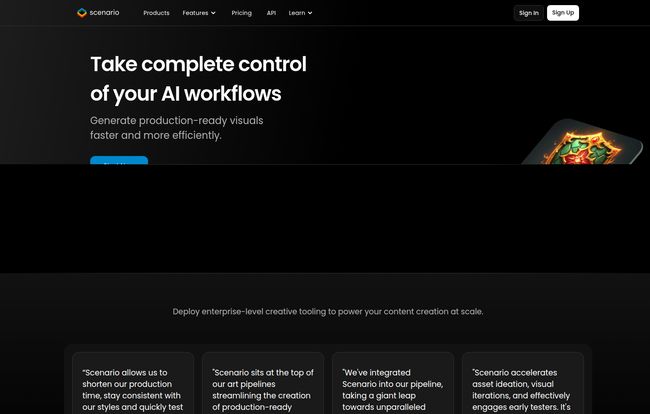
Visit Scenario
The Features That Actually Matter
Okay, marketing fluff is one thing, but what does it actually do? I've been playing around with it, and a few things really stand out from the typical AI crowd.
Training Your Own AI Models
This is the big one. This is the feature that made me sit up and pay attention. Instead of relying on a generic, one-size-fits-all model, Scenario lets you train your own. You feed it a set of images—say, 15-20 pictures of your game's unique art style—and it learns. It creates a custom model that understands your aesthetic.
The result? You can generate assets that are perfectly consistent with your game's world. No more weird, out-of-place-looking AI art. You get total creative control, ensuring everything feels like it belongs. It’s a breathe of fresh air, honestly.
Generating Consistent Visuals at Scale
Once you have your model trained, you can start generating. Need 50 different variations of an alien metal texture? No problem. Need a whole set of icons in the same style? Easy. This moves AI from a neat trick for one-off images to a legitimate production pipeline accelerator. It's about building a whole library of assets that share the same visual DNA. For a large team, the time and cost savings here are just massive.
Real-Time Editing and Visualization
I love this part. You aren't just typing a prompt and hoping for the best. Scenario provides an interactive canvas where you can see your textures and adjust them. You can guide the generation with reference images or even rough sketches. This back-and-forth process feels much more like collaborating with an artist than just operating a machine. It bridges the gap between pure generation and artistic direction.
My Experience: The Good and The Sticking Points
Alright, let's get down to it. Is it perfect? No, no tool is. But it's damn good.
What I Absolutely Loved
The speed is intoxicating. Creating a high-quality, seamless, PBR-ready texture map set (albedo, normal, roughness, etc.) by hand can take hours. With Scenario, once you have a good prompt and model, you can get something 80-90% of the way there in seconds. The quality of the seamless tiling is particularly impressive; it’s a problem many other tools haven’t quite solved.
I also spent a good while just browsing their free texture database. It’s a solid resource for placeholders or even final assets for smaller projects if you're just getting started.
A Few Potential Hurdles
First off, this is a professional tool, and it comes with a subscription. There isn't really a 'free forever' tier for serious work, which might be a barrier for hobbyists. We'll get to the pricing in a moment.
Second, while the basic generation is easy, training your own models does require a bit of thought. You need to curate your training data carefully. Garbage in, garbage out, as they say. You don’t need to be a coder, but you do need an artist’s eye to get the best results. The quality of what you get out is directly tied to the model you're using and the parameters you set, so expect a little experimentation.
Breaking Down the Scenario Pricing
Money talk. This is often the deciding factor, right? Scenario uses a subscription model based on tiers and something they call “Creative Units” (CU), which is pretty standard for AI services. Here's a quick, no-nonsense look:
| Plan | Price | Best For |
| Pro | $36/mo (billed annually) or $45/mo (billed monthly) | Indie developers, solo artists, and small teams. |
| Team | $120/mo/seat (billed annually) or $150/mo/seat (billed monthly) | Professional studios needing more capacity, higher priority, and collaboration features. |
| Enterprise | Custom Pricing | Large game studios with very specific security, support, and integration needs. |
The Pro plan gives you 5,000 CU, which is a decent amount for a solo dev, plus high-res downloads and upscaling. The Team plan jacks that up to 15,000 CU per seat and adds priority processing and support. Honestly, for most of my readers, the Pro plan is likely the sweet spot. It's a justifiable business expense when you consider the time it saves.
Who Is This Tool Really For?
While the marketing is heavily skewed towards game development, I see a broader audience here. Yes, it's a home run for:
- Indie Game Developers: A small team or solo dev can now create an art style that rivals much larger studios.
- Large Game Studios: The ability to train custom models and scale production makes this a no-brainer for accelerating art pipelines.
- 3D Artists & Freelancers: Quickly generate base textures for concepting, modeling, or selling on asset stores.
But I also think architectural visualization artists, VFX professionals, and even product designers could find immense value in rapidly creating realistic material surfaces.
So, What's the Final Verdict?
Look, the AI landscape is moving at a terrifying pace. Every week there's a new tool that promises to change everything. Most of them are just noise. Scenario, however, feels different. It feels… focused. It's not trying to be everything to everyone. It's trying to solve a very specific, very annoying problem for a specific industry, and it's doing a fantastic job of it.
It’s not a magic button that will create your entire game for you. You still need artistry, a good eye, and a clear vision. But it’s an incredible force multiplier. It's a tool that handles the tedious, repetitive parts of asset creation, freeing you up to focus on what really matters: making a great game.
If you're in the business of creating 3D worlds, you owe it to yourself to give Scenario a try. It might just change the way you work.
Frequently Asked Questions
- What is Scenario primarily used for?
- Scenario is designed for generating consistent 3D textures, materials, and 2D game assets like icons or marketing images. Its main strength is creating assets that conform to a specific, custom art style for video games and other 3D projects.
- Can I use Scenario for free?
- Scenario offers a free trial to let you experiment with the platform, but for full access to its features, like training custom models and high-resolution downloads, you'll need a paid subscription like the Pro or Team plan.
- How do the “Creative Units” (CU) work?
- Creative Units are the credit system Scenario uses. Each action, like generating an image or training a model, consumes a certain number of CUs. Your monthly subscription gives you a new batch of these units to spend.
- Do I need to be a programmer to use Scenario?
- Absolutely not. The platform is visual and user-friendly. However, having a good artistic sense for curating training data and writing effective prompts will significantly improve your results.
- Are the textures really seamless?
- Yes, one of its core features is the ability to generate high-quality, seamlessly tileable textures, which is a huge advantage for creating materials in game engines like Unreal Engine or Unity.
- Can I use assets I create with Scenario in commercial projects?
- Yes, the paid plans grant you a commercial license to use the assets you generate in your games, films, or other projects that you intend to sell. As always, it's a good idea to check their latest terms of service for specifics.
Reference and Sources
- Scenario Official Website
- Scenario Pricing Page
- GameDeveloper.com article on Procedural Art (for context on asset generation)
